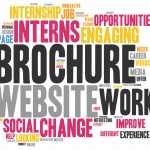 While the feedback submitted by the more than 200 student and recent graduates on our 2012 TalentEgg Campus Recruitment Excellence Awards judging panel was positive overall, the thousands of carefully-written comments on everything from campus career websites to campus recruiters also provided some fascinating and instructive insight into what Canadian employers can improve upon.
While the feedback submitted by the more than 200 student and recent graduates on our 2012 TalentEgg Campus Recruitment Excellence Awards judging panel was positive overall, the thousands of carefully-written comments on everything from campus career websites to campus recruiters also provided some fascinating and instructive insight into what Canadian employers can improve upon.
We outlined some basic best practices for each awards category at the Campus Recruitment Excellence conference in May, but in the coming weeks and months, we will be posting in-depth analysis of those areas of improvement, including real-world examples of employers that get it right, real feedback from students and recent grads, and our recommendations for how to execute these must-haves effectively.
The TalentEgg Awards judges were most vocal about what they liked – and didn’t like – about employers’ websites, and provided tens of thousands of words of recommendations for how to improve them. It makes sense – today’s students grew up online and still spend a ton of time using website for all sorts of different purposes, including learning about employers and searching for jobs.
We’ve compiled their recommendations into the top 6 easy ways you can improve your campus career website before the fall recruitment rush:
1. Post your recruitment schedule
Most students don’t operate on employers’ recruitment schedules – or even know they exist.
To attract top talent that is super busy during the school year getting work, extra-curricular and volunteer experience, students should be able to find information about what they should expect and when they can expect it year round on your campus career website and, by extension, your TalentEgg profile.
“Your recruitment cycle is very vague – great, we know you hire in the summer, winter and fall. Providing more detail would be of more value.”
—Commerce student
“The schedule is very helpful in informing students of the best time to apply for positions because it is something that remains a mystery to many.”
—Arts student
For example:
![]() Nexen explains on multiple pages in the Students & New Graduates section of their Careers microsite that they post new graduate and technical summer student opportunities in mid-September, and co-ops and internships in September, January and May.
Nexen explains on multiple pages in the Students & New Graduates section of their Careers microsite that they post new graduate and technical summer student opportunities in mid-September, and co-ops and internships in September, January and May.
Savvy students who are passionate about working for Nexen will mark their calendars or make a mental note and check back at the appropriate time. This information has also been incorporated into Nexen’s TalentEgg profile.
![]() PwC also mentions on their individual office pages that information on their fall recruiting activities is coming soon, and took this strategy one step further in their TalentEgg profile by listing general job opportunities with deadline dates that say, “Opening in August and September 2012.”
PwC also mentions on their individual office pages that information on their fall recruiting activities is coming soon, and took this strategy one step further in their TalentEgg profile by listing general job opportunities with deadline dates that say, “Opening in August and September 2012.”
This means that, throughout the year, as students browse for career opportunities in Accounting or Consulting, they will be able find PwC and know that the firm is interested in them despite the fact that they are not currently hiring for those particular roles.
Best practices:
- Be specific: Months are OK but specific dates are better, especially as the dates get closer – this way, students can add the dates to their personal calendars and be reminded of your recruitment schedule.
- Tell them what to expect: If you hire for the exact same roles or programs each year, post the job descriptions but replace the application information with information about your recruitment schedule.
2. Add an on-campus events calendar
Not every employer boasts standing-room-only information sessions or career fair booths – these events often conflict with students’ class and work schedules, and aren’t seen by students as essential outside of the Accounting industry, primarily.
One way to attract more students to your events (and, in turn, your organization) is to include a calendar or list of events on your campus career website. They’re already looking for the information – the TalentEgg Awards judges said they appreciated when employers included an events calendar on their websites (and noticed when it was missing, too).
“The calendar is a great idea. Students have very busy lives and depend on technology to organize their day-to-day activities.”
—Human Resources student
“The calendar is a great tool to post on-campus dates, allowing students to prepare to meet representatives from the company.”
—Marketing student
For example:
![]() Alberta Health Services features its Career Events page prominently in the main navigation of its careers website, inviting job seekers to “Come and talk with us.” When they tweet about the events or post them on Facebook, they simply link back to their Career Events page:
Alberta Health Services features its Career Events page prominently in the main navigation of its careers website, inviting job seekers to “Come and talk with us.” When they tweet about the events or post them on Facebook, they simply link back to their Career Events page:
AHS is excited to be attending the #UBC Rehab Job Fair in #Vancouver on June 16! bitly.com/AHSevents
— AHS Careers(@AHS_Careers) June 14, 2012
TalentEgg also automatically lists these events in our Events section, which is tied to the Events tab of Alberta Health Services’ profile. Then we promote them through our social media channels to get the word out:
Meet @AHS_Careers recruiters at the #UBC Rehab 2012 Job Fair in #Vancouver tomorrow: bit.ly/LNkKpi
— TalentEgg.ca (@TalentEgg) June 15, 2012
Best practices:
- Stay up to date: There’s nothing worse for students than finding an events calendar only to discover that the events are from last month or even last year – update your calendar, at the very least, at the beginning and end of each recruitment cycle (ideally between weekly and monthly).
- Be detailed: What kind of event is it? Where is it? What time? Do students have to register to attend? What should they expect when they arrive? Should they bring their resume? Include links for external events.
3. Put a prominent “apply now” button or link on every page
To you, it might seem redundant and repetitive, but to students, an employer’s career website can never have too many opportunities to “apply now.”
Nearly one quarter of our awards judges mentioned that they loved when a website featured a prominent “apply now” button or link, or recommended that the employer in question add one.
“I had trouble navigating to the link where you actually apply for jobs. I thought it would be under the sidebar links but those links just gave descriptions.”
—Human Resource Management student
“A very distinct ‘apply now’ button would be beneficial.”
—Business Administration Management student
“I liked that the ‘Apply Now’ button was prominently featured on every page and it leads students to an up-to-date listing of open positions.”
—Public Relations student
Bottom line: Students don’t want to click more than once to get to your job listings or application form.
For example:
![]() No matter where you click on Vale‘s career website, valejobs.ca – whether you’re learning about what Vale does, where they operate or when they’re holding recruitment events – a bright yellow button appears at the top or bottom right telling job seekers to “apply now.”
No matter where you click on Vale‘s career website, valejobs.ca – whether you’re learning about what Vale does, where they operate or when they’re holding recruitment events – a bright yellow button appears at the top or bottom right telling job seekers to “apply now.”
At TalentEgg, we noticed that the “jobs” page on every single employer profile was much more popular by far than any other page on the profile. We added “call to action” links on every profile page that lead students directly to that employer’s job listings, making it easier for them to find what they’re looking for.
Best practices:
- Make it pop: Use a bright colour that contrasts with the background of the rest of the site – some tests show simply changing a button’s colour from green to red can increase clicks by one third!
- Keep it “above the fold”: If students have to scroll down to the bottom of your website to find it, chances are they won’t see it at all.
- Call them to action: Instead of just saying “career opportunities” or “job listings,” use a call to action such as “apply now,” “browse job listings” or “search career opportunities” – or some combination of those examples.





0 Comments
2 Pingbacks